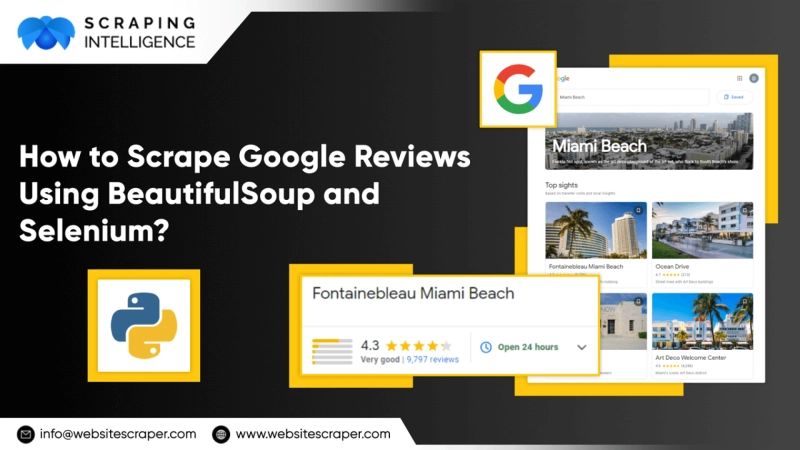Online reviews have become an essential component of our decision-making process in today's digital age. We frequently utilize platforms like Google Maps to read user evaluations and judge the quality of services when looking for a cozy restaurant, a respected doctor, or a five-star hotel.
For businesses, these evaluations are more than just feedback; they are an important part of their internet visibility. So, what if you could use Python to extract and evaluate these useful insights from Google Maps? In this article, we'll look at how to scrape Google Maps reviews with Python, which opens up a whole new world of possibilities for businesses, researchers, and data aficionados.
Scraping Google Maps reviews can provide a plethora of data. You can discover client trends, sentiments, and preferences, giving businesses with practical insights to improve their services.
Python provides a comprehensive framework for automating the extraction of Google Maps evaluations, whether you want to acquire competition intelligence, track your own business's performance, or do market research. Join us as we dig into the fascinating world of web scraping, data extraction, and analysis to uncover the hidden jewels of Google Maps ratings.
The Playwright and Beautiful Soup Python packages can be used to scrape Google Maps reviews. The first is a new headless browser, while the second is a well-known web scraping library with substantial documentation.
Web Driver Initialisation & URL Input
Import and initialize the web driver to get started. Then, using the get method, we will pass the Google Maps URL of the location for which we want reviews:
from selenium import webdriverdriver = webdriver.Chrome()
#London Victoria & Albert Museum URL
url = 'https://www.google.com/maps/place/Victoria+and+Albert+Museum/@51.4966392,-0.17218,15z/data=!4m5!3m4!1s0x0:0x9eb7094dfdcd651f!8m2!3d51.4966392!4d-0.17218'
driver.get(url)
Navigating
The web driver will mostly certainly encounter the consent Google page to agree to cookies before proceeding to the actual web destination we provided via URL variable. If that's the case, we can proceed by clicking the "I agree" option.
#to make sure content is fully loaded we can use time.sleep() after navigating to each page
import time
time.sleep(3)
This one is a little hard. In our case, the URL directed us to the exact site we desired to display, and we clicked on the 41,408 reviews button to load reviews.
However, there are several various sorts of profile pages on Google Maps, and on many occasions, the location will be presented with a slew of other places listed on the left side, and there will almost certainly be some adverts at the top of the list. The following url, for example, would link us to this page:
url = 'https://www.google.com/maps/search/bicycle+store/@51.5026862,-0.1430242,13z/data=!3m1!4b1'This post provided a quick overview and simple example of web scraping with Python. Data sourcing can necessitate the use of complex data collection methods, which can be a time-consuming and costly task without the proper tools.



